In today’s Beyond the Basics podcast (above), we talk with Ralph Morini, Virginia Cooperative Extension Master Gardener and researcher about his compost tea article for the Piedmont Master Gardener’s newsletter, The Garden Shed. The March 2019 article is entitled, “The Truth About Compost Tea: Making It, Using It, and What To Expect From It”. Read it for yourself for even more information about the Compost Tea-making process.
In that article, Morini delved into the online compost tea rabbit hole, which is comprised of the deep warrens of compost tea opinion, experience, sales attempts, and a smattering of actual well-researched studies. As you can surmise from our conversation in today’s newsletter podcast, Morini came away from his deep dive with more questions than answers. Which harkens back to Farmer Fred Garden Rule #8: “If It Works for You, Fine. But Keep an Open Mind.” Morini concludes his article with nine sources of reputable information, source material you may want to check out for yourself.
The genesis for our thorough discussion regarding the “truth vs. myth” aspects of compost tea use sprung from a comment Steve Zien, an organic gardening professional, made about using compost tea back in Episode 188. He loves it. Especially using worm castings as the basis of your compost tea.
I’ve know Steve for 40 years. I know that he is usually ahead of the curve when it comes to implementing his earth-friendly garden practices. I also know that the rest of us usually catch up with him and buy into his train of thought about a decade later. It turns out, he’s usually right.
Here are the Cliff Notes version of our discussion with Ralph Morini. Points about compost tea that you should consider before you apply it around or on top of your plants:
How the Compost Tea is Made
Ralph Morini:
“Compost tea is a solution made from compost and clean water* combined in a bucket or some sort of a container. We recommend that the solution be aerated. As Steve mentioned, the best way to do that is with an aquarium pump. Let it run for one to two days. The typical aquarium aeration system includes a pump that sits outside the aquarium and then basically a couple of diffusers, the air from the pump will go into an inlet on what's called a stone and it becomes diffused at the output side of the stone and blows bubbles into the water.”
*Ah yes, the water quality. Garbage in, garbage out. That might have been the problem for some of the studies of compost tea. Your water may kill the beneficial bacteria and fungi that you are attempting to add to the soil. More on that below.
What is the Active Ingredient in Compost Tea?
Ralph Morini:
“What it does is it allows the microbes in the compost to multiply many, many times over so that you have an extremely microbe rich solution, a solution that advocates claim can be used for anything from fertilization - which I'm not buying - to enriching the microbe content in the soil, which is what Steve referred to. And if you have enough organic matter in the soil to feed them, it can release a lot of the nutrients that matter is holding in the soil. Some people use it as a foliar spray, which, if you have the right type of microbes in the solution, can help to prevent disease by out competing; or, the good guys somehow overtake the bad guys and reduce disease damage on your plants. Or you can use it to stoke up your compost pile. If you want to get some more microbial activity going in your compost pile, for instance. It can be sprayed on the lawn or on the ground directly. My own view of it is that the amount of compost is typically about one or one and a half cups of compost per gallon of water. So I think people who claim a lot of nutrients in it are overstating the case. There can't be that much nutrients. On the other hand, microbial content is where it could conceivably have some benefit both on releasing nutrients and soil. If the soil has enough organic material for them to feast on for a while*, or potentially doesn't have the right microbes in it. It might help disease prevention on plants.”
*Pouring compost tea on poor soil, bereft of microbial activity, may be a waste of compost tea. The soil needs to have certain healthy qualities to assimilate the addition of more microbes.
It’s All About the Water Quality
Ralph Morini:
“You want to make sure your water is potable starting off. You can't have any chlorine or chloramine in it. The reason they're in the water supply is to kill bacteria, and fungi. If you put chlorinated water in your bucket before you put your compost in and you bubble it for a day or so, you get rid of the chlorine; it should be okay. Chloramine is longer lasting and you can't just get rid of it by aerating or boiling. You really have to extract that from the water by using a charcoal filter. There are some materials that are used in aquariums that will help you if you mix it with the water. It changes the chemical composition of chloramine and it will leave the water by aeration. You can get that at a pet supply store or online. So you need to find out if your water is treated, what it's treated with* and take appropriate measures to get that stuff out of the water.”
*Good luck with that. You may want to spring for a water quality test from an independent source, ideally someone who isn’t also in the business of selling water treatment equipment.
Use It Quickly! And, Make It Yourself.
Ralph Morini:
“It's recommended to be used within about four hours. You're generating all this microbial activity and they're really moving along. If you leave them in the bucket for too long, that large population of highly active microbes is going to consume the oxygen. They'll go anaerobic, and that destroys the point of your whole process. And, for that same reason, I'm very skeptical of store-bought compost teas. Some of them even claimed to be made of aerobically, but when they're sitting on the shelf for however long they're there, it's pretty hard to believe they remain that way.* I've tried to find some sort of research-based data about that and haven't been able to, but I wouldn't recommend them. I think if you want to do this, you're much better off making your tea yourself.”
*I don’t know about you, but I often wonder about the health of the critters in bagged soils, soil amendments and fertilizers sitting on Garden Center asphalt, outdoors in the sun, that claim to have beneficial microbes (mycorrhizae) included.
Compost Tea as a Foliar Spray?
Farmer Fred:
“There are advocates like Steve Zien who say it's a great foliar spray, reducing the chances of disease. Have you seen any research based on its effectiveness as a foliar spray?”
Ralph Morini:
“No research. Unfortunately, I've seen mostly organic gardeners and YouTube types talking that they've had success with it, but nothing at all from any of the extension services or research-based groups* that I trust.”
*When doing Internet searches for garden answers, especially in regards to pest control, include the suffix “.edu” in your search terms. Or “.org”, if you’re feeling lucky.
Quality Compost? What’s Quality Compost?
Ralph Morini:
“So how do you measure good quality compost? The main thing in my view is it needs to be hot compost, I suppose manure based compost products are likely to have a little bit of a higher nitrogen content, which is great for flowers and vegetables. Compost that's made from arborist waste and that kind of thing - leaves, yard waste - are likely to be higher fungal content, which are great for shrubs and trees. It's more typical of what you'd find in the forest. So that makes some sense to me. You know, unless you get an analysis of the compost that you buy, which isn't very common, I think focusing on hot compost and trying to understand what the main ingredients are is the best approach.”
Tomatoes and Peppers Like Bacteria; Your Fruit Trees Like Fungi. Match Your Compost and Mulch Choices with the Needs of Your Particular Plants
Farmer Fred:
“Interesting, you brought up forest products. We're learning more and more about mulches and their use and the same is true with compost: the critters in the soil, all that microbial activity, really depend on what's in the soil already and the type of plants that are growing around there. And you have two types of mulch, compost, and compost tea: a fungally dominated tea (or mulch or compost) or a bacterially dominated tea (or mulch or compost). One is better for woody plants. One is better for your annual plants.”
Ralph Morini:
“Herbaceous plants tend to be high nitrogen consumers. We plant them, harvest them, replant them every year. They tend to be high nitrogen consumers. And so for that kind of a use, the higher nitrogen tea can be helpful. The problem with creating them is beyond the basic content of the compost. It’s that the additives that are typically recommended are sugar-based, like unsulfured molasses or something that the sugars tend to enable more reproduction on the part of the pathogenic microbes that we don't want in our tea. For instance, if that stuff is added to a compost tea, the National Organic Program requires the growers have the tea analyzed to make sure that there is no coliform or salmonella, before it's allowed to be used on their crops or soil or their plants. On the other hand, forests tend to be permanent perennials. The stuff on the forest floor is decomposed leaves and wood, basically, it's a much higher carbon content, it's harder to break down. The stuff is broken down by fungi, mainly. 90% of our plants are mycorrhizal fungi partners. And so for that reason, those kinds of teas, which tend to have the fungal content tend to be appropriate for woody plants.”
Farmer Fred:
“So, a bacterially-dominated product that you're making (from green waste products) would be perfect for your annual vegetables, for example. And the wood-dominated compost is better for the permanent crops like perennials (as well as shrubs and trees)*.”
*Those kitchen scraps and outdoor flower and vegetable matter? Save that compost for your annual beds. The stuff that goes through your chipper-shredder, including tree limbs, is great for your woody plants as a top-dressing mulch.
Farmer Fred Garden Rule #7:
EVERYTHING YOU KNOW IS WRONG.
In the 1940's & 50's, DDT was available to home gardeners as a pesticide. Turns out, it caused cancer and killed birds. In the 1960's-70's, the Modesto Ash was considered the "perfect shade tree" for the Central Valley of California. Turns out, it is susceptible to anthracnose, mistletoe and is no longer recommended. In the first decade of the 21st century, the pesticides Diazinon and Dursban were taken off store shelves. Also proven ineffective, despite beliefs and claims to the contrary: Vitamin B-1 for transplant shock, calcium sprays to stop blossom end rot on tomatoes, store-bought ladybugs (the majority of them fly home. sorry.).
And, apologies to the Firesign Theater.
As an Amazon Associate, I earn from qualifying purchases from some of the underlined links in the newsletter. This is how I am trying to keep this a free newsletter. And as long as you buy whatever you want from Amazon using any of those links to get into the Amazon site, I get a few pennies. Thank you.
Thanks for Subscribing and Spreading the Word About the Garden Basics with Farmer Fred newsletter, I appreciate your support.
And thank you for listening to the Garden Basics with Farmer Fred podcast! It’s available wherever you get your podcasts. Please share it with your garden friends.
Fred Hoffman is also a University of California Cooperative Extension Master Gardener in Sacramento County.





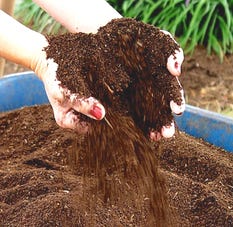





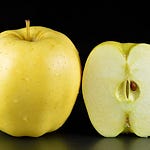
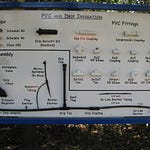

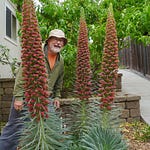

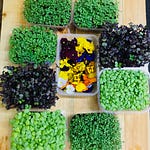
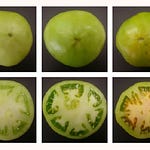
Share this post